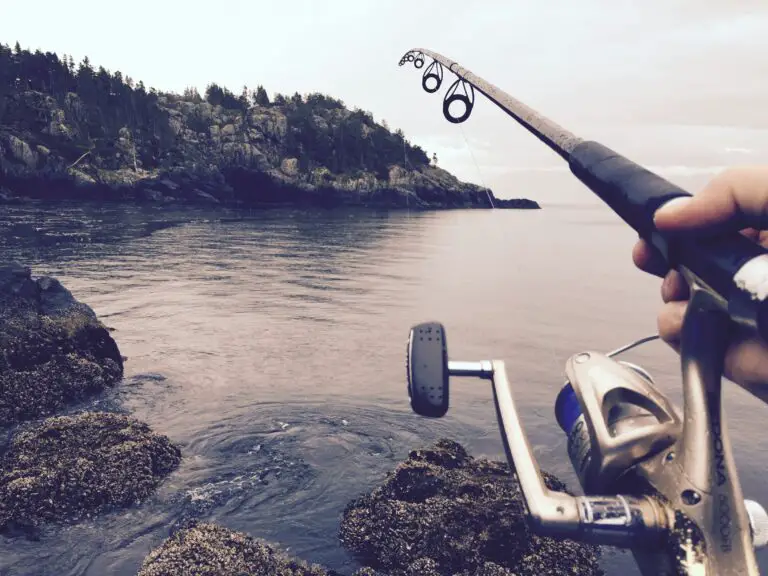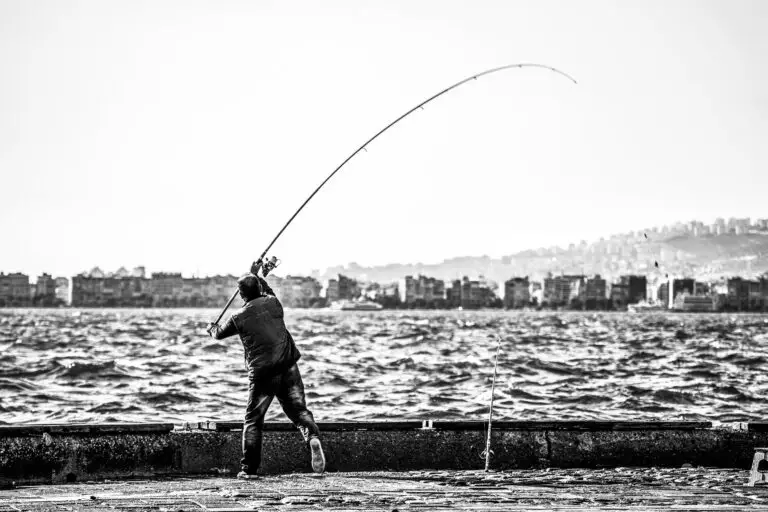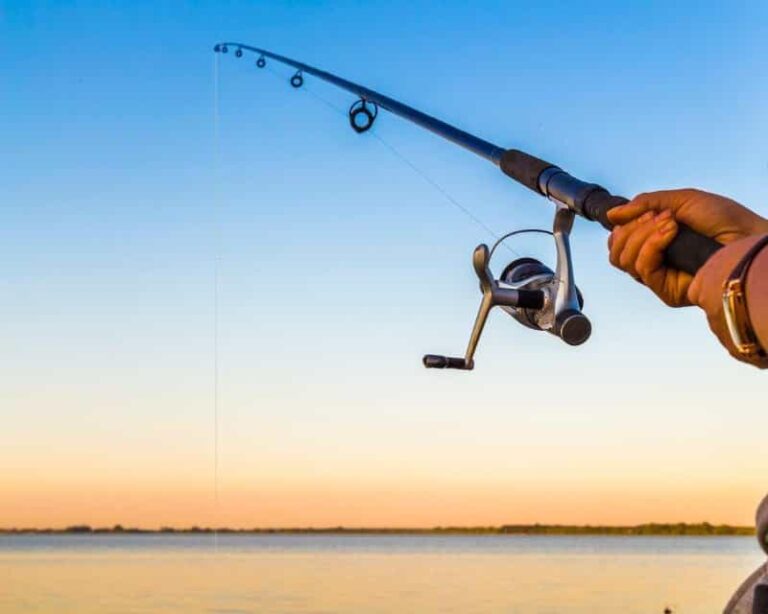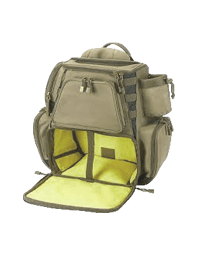What Type OF Line For Baitcaster 2024 Ultimate Guide

Let’s admit it, folks, experiencing the screech of a baitcaster that could rival a banshee’s wail is a unique kind of horror. You glance down, only to find a tangled mess of fishing line resembling a bird’s nest after a messy breakup What Type OF Line Is Baitcaster 2024?
Yes, the dreaded bait-caster backlash. We’ve all been there, murmuring under our breath and questioning our sanity (and maybe our lure choice, that spinner-bait with all the treble hook, seemed much cooler at the store).
But before you consider tossing your baitcaster overboard in frustration, hold on! It’s highly likely that your line choice is to blame for this tangled scenario. Unlike their spinning reel counterparts, baitcasters are quite particular about their fishing line.
They require something special, something robust, something with minimal memory—essentially, the opposite of your forgetful uncle who forgets your birthday every year.
This guide serves as your fishing line expert, unraveling the mystery (and hopefully your reel) so you can cast confidently. We’ll delve into the various line types, including braided options, stretchy mono-filament veterans, and stealthy fluorocarbon choices, assisting you in selecting the one that will harmonize with your baitcaster (and not cause it to screech).
So grab a drink (alcoholic or not, depending on the number of backlashes you’ve faced today), get comfortable, and let’s free you from this fishy entanglement!
What Type OF Line For Baitcaster 2024?
Monofilament, braided, and fluorocarbon are a number of the options to recall while selecting the right fishing line for a baitcasting reel. Let’s ruin it down:
Monofilament Line: Monofilament is a flexible preference that works properly for diverse fishing situations. It’s usually used for panfish, catfish, trout, and certain bass and walleye fishing eventualities.
Monofilament offers low visibility and desirable stretch, making it appropriate for particular packages in which those abilities are favored.
Braided Line: Braided traces, similar to the PowerPro Braided Line, are popular among anglers using baitcasters. They have a smaller diameter in comparison to monofilament or fluorocarbon lines, but they provide greater strength.
Braided strains are top-notch for casting and provide sensitivity, making them a top preference for plenty of baitcasting reels.
Fluorocarbon Line: Sunline Super FC Sniper Fluorocarbon is an immoderate-to-usual-overall performance preference. You can use it in several fishing situations because of its versatility. Fluorocarbon strains have low visibility underwater and less stretch than monofilament.
However, they may be able to extend reminiscences through the years, so it’s crucial to fish frequently or trade the line often to keep away from knotting and tangling issues.
Ultimately, the best line in your baitcaster is predicated on your unique fishing wishes and choices. Consider elements like visibility, stretch, and the kind of fish you’re centered on. Happy fishing!
What lb. test line should I use?
The preference of fishing line test (pound-take a look at) depends on numerous factors, including the sort of fish you’re targeting, the fishing environment, and your private preferences. Here are some well-known tips:
Lighter lines (6–12 lb):
ideal for smaller freshwater fish like bass, trout, and panfish.
great for finesse strategies and casting lightweight lures.
works nicely in clear-water situations.
Medium Lines (12-20 lb):
versatile for an extensive variety of species and fishing situations.
suitable for large freshwater fish and some inshore saltwater species.
balances energy and manageability.
Heavy Lines (20+ lb):
used for big sport fish, heavy cover, or saltwater fishing.
provides the electricity needed to manage larger fish.
may sacrifice some casting distance because of the thicker diameter.
Remember to regulate your line preference based totally on the unique fishing state of affairs.
What’s the best line for saltwater baitcasting?
When selecting a line for saltwater baitcasting, remember durability and corrosion resistance. Here are some top options:
Shimano TranX: Features The Shimano TranX features the CoreProtect waterproof era, making it suitable for harsh saltwater environments.
Daiwa Coastal: aircraft aluminum spool, high-strength gearing, and corrosion-resistant ball bearings
Penn Squall Baitcaster: full metal body, stainless steel bearings, and machined brass gears
Abu Garcia Revo: stainless metallic ball bearings, X2-Craftic alloy frame, and C6 Carbon aspect plates
Piscifun Alijoz: high-strength aluminum body, machined brass gears, and stainless steel bearings
Kastking Kapstan Elite: double-shielded chrome steel ball bearings, manganese brass gears, and corrosion-unfastened carbon frame
Remember, saltwater demands reels built to face up to its corrosive nature. Choose accurately for a a hit fishing enjoy!
What’s the best line for freshwater baitcasting?
When it comes to freshwater baitcasting, braided fishing line is an awesome choice. Here’s why:
Advantages of Braid
Maximized Casting Distance: Braid minimizes line oscillation, enhancing accuracy and making an allowance for longer casts.
Low Memory: Braid doesn’t preserve its shape, making sure smooth lines flow off the spool.
Versatility: You can tie braid directly to your lure for immediate retrieves or upload a fluorocarbon leader for precise techniques like worming and jigging.
For a standard freshwater baitcaster, spool approximately 152,100 yards of 10–12 lb braided line, and you’re also equipped to hit the water!
What’s the best line for ice fishing?
When it involves ice fishing, the first-class traces share some key traits.
Virtually Invisible: Choose a line that stays inconspicuous underwater.
Freeze-Resistant: Lines that don’t freeze up in frigid temperatures are essential.
Flexible and Sensitive: Look for strains that stay supple and sensitive for detecting diffused strikes.
Abrasion-Resistant: For bigger fish, opt for traces that could resist wear and tear.
Remember, the proper line could make your ice fishing experience more efficient and fun!
II. Understanding Line Types for Baitcasters: Choosing Your Line Partner (not that creepy guy at the bar)
After offering our condolences for the anguish caused by backlash, let’s discuss fishing lines for baitcasters. Consider it similar to selecting a fishing partner: you want someone dependable, powerful, and possibly even a little entertaining. Here’s the lowdown on the three main contenders:
A. Braided Line: The Thin, Strong, and Slightly Snobby One
Pros: Picture launching your lure a mile across the water with pinpoint accuracy. That’s a braided line for you. It’s thin, casts like a dream, and has the muscle to handle big fish and wrestle them out of heavy cover. Plus, it practically has a photographic memory—no more nightmarish coils waiting to happen!

Cons: Here’s the catch (pun intended). Braid is like that guy at the bar who wears all designer clothes—it can be a bit flashy. Fish in clear water might see it coming a mile away, and since it doesn’t stretch much, there’s a higher chance of pulled hooks. Also, it loves to snag weeds like nobody’s business.
Monofilament Line: The Affordable and Familiar Friend
Pros: Monofilament is the most reliable of the fishing lines. It is inexpensive, easy to locate, and has a small amount of flexibility, making it suitable for playing tough fish with lighter lures. It’s also a more covert alternative than braid because it mixes in better with the water.
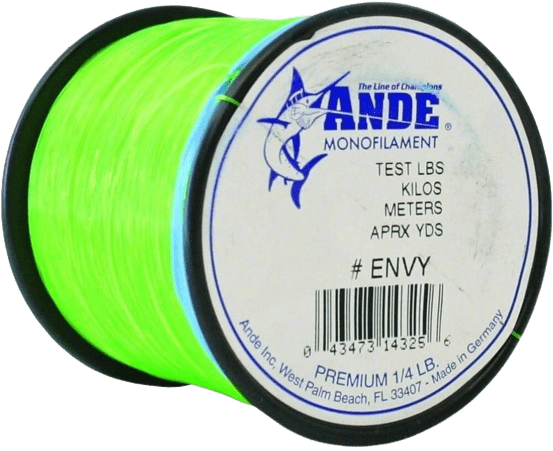
Cons: Unfortunately, mono is like your forgetful friend—it has a terrible memory, which can lead to backlashes. And, compared to braid, it’s a bit on the chunky side, which can affect casting distance. Strength-wise, it’s not the heavyweight champion either.
Fluorocarbon Line: The Stealthy (and Pricey) Ninja
Pros: Picture a fishing line that vanishes in the water like a ninja. That’s fluorocarbon for you! Perfect for clear water conditions where fish are extra cautious. It also sinks quicker than other lines, making it perfect for deep presentations.
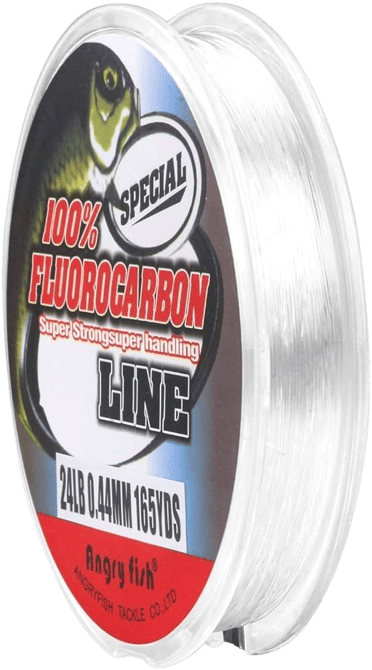
Bonus: It’s more resistant to abrasion than mono, so those rocks and logs won’t easily break it.
Cons: Here’s the not-so-stealthy part: fluorocarbon is the priciest of the lot. It’s also more rigid than mono, so you might need to tweak your casting technique a bit. And in terms of strength, it falls behind a braid of the same weight.
Mastering the Match Choosing Your Line Like a Pro
It’s time to choose your perfect match now that you’re acquainted with the lineup (and hopefully have dodged the creepy bar guy). Choosing the appropriate line is like When selecting a swimsuit, make sure it fits the occasion and is both stylish and cozy.
Here is something to consider:
Target Species: To begin with, consider the kind of fish you wish to capture. Using the appropriate line strength is essential based on the size of your target catch.
Water Clarity and Obstacles: Is the water clear or filled with vegetation and debris? For clear water, visibility is key, making fluorocarbons a great choice. In areas with dense cover, go for a strong and abrasion-resistant braid.
Skill Level: Are you a seasoned baitcaster or a beginner working on your casting skills? Braid has great features but is more prone to backlashes. Mono-filament is easier for beginners to cast, while fluorocarbon offers a balance between the two.
Budget Considerations: Fishing can get expensive. Braid is usually the priciest option, while mono is more budget-friendly. Fluorocarbon falls in between the two.
Here’s a helpful guide to kick-start your selection process
Beginners: Start with a heavier mono-filament line (15 lb+). It’s easier to cast and can help prevent frustrating backlashes.
Skilled Fishermen: For a flexible alternative that works well in a variety of fishing conditions, go for braided line (10–15 lb).
Artful Fishing: Fluorocarbon is the best material to use when working with clear water and lightweight lures because it is both durable and invisible.
Recall that these suggestions are only the beginning. Try several things to see what suits your fishing style and needs the best! Ask the folks at your neighborhood tackle store for recommendations; they are happy to provide tailored guidance.
Expert Tips for Enhancing Your Bait-casting Experience (and Line)
Now that you have the knowledge to select the ideal line partner, here are some expert tips to enhance your bait-casting experience and prevent line-related issues!
1. Filling Up Just Right: Similar to Goldilocks seeking the perfect porridge temperature, ensure your line fills the bait-caster spool adequately without overflowing or leaving excessive empty space. Refer to your reel’s manual for line capacity recommendations.
2. Backing Up Your Line (Optional): Consider the backing line as a reliable companion to your main braid line. It can help fill the spool before adding the more expensive braid, saving you money and potentially enhancing casting performance.
3. Leading the Way: When opting for braid (a robust but sometimes visible line), think about using a leader knot to attach a fluorocarbon leader. This unseen leader provides stealth and abrasion resistance, particularly useful when fishing near rocks or heavy cover.
4. Regular Line Inspections: Just as you wouldn’t drive with bald tires, avoid fishing with a worn-out line! Periodically examine your line for nicks, abrasions, or weaknesses. Replace it at the first signs of damage to prevent losing that prized catch (or your lure).
By adhering to these suggestions, you’ll progress in mastering the art of bait-casting and bid farewell to those vexing backlashes. Remember, practice leads to perfection, so go out there and cast confidently!
If you encounter any challenges, don’t hesitate to seek guidance from your local tackle shop; they are akin to fishing experts and can provide tailored expert advice to meet your specific requirements.
The Reel Deal: Choosing the Right Line for Bait-casting Success
So there you have it, parents! We’ve unraveled the thriller of fishing traces for baitcasters, examined the strengths and weaknesses of braid, mono, and fluorocarbon, and even shared some expert guidelines to maintain your line (and your sanity).
Remember the key factors
Match your line to your needs: don’t forget goal species, water readability, cowl, and your ability level.
There’s no “one size fits all.” Experiment with one-of-a-kind line sorts (and weights) to find out what works first-class for you and your fishing fashion.
Don’t hesitate to ask for help. Local tackle stores are goldmines of fishing information!
Now it’s your danger to embark on the journey to bait-casting fulfillment! Share with us the feedback beneath. What’s your chosen line type for baitcasters? Do you’ve got any confirmed hints to alternate with fellow anglers? Reach out to us, and let’s retain the fishing verbal exchange!



